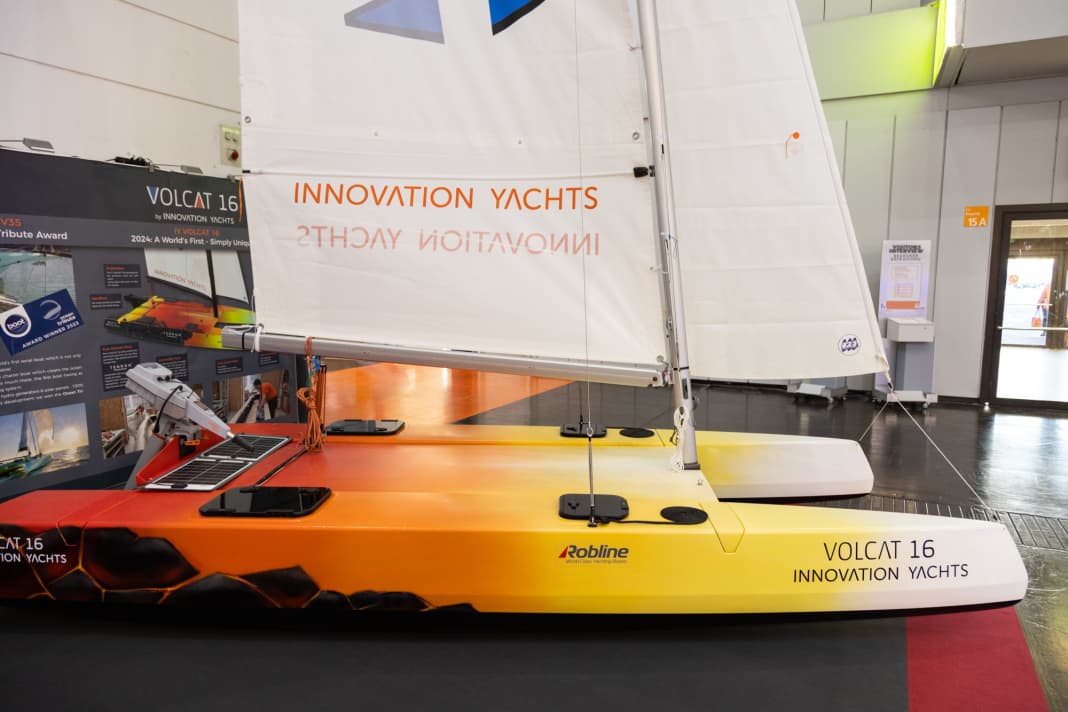





Marion Koch's design is created at the joint shipyard in Vendée/France. The Strandkat is made from volcanic fibre, balsa wood and bio-based epoxy and is fully recyclable. Just under five metres long and weighing 162 kilograms according to the shipyard, the Strandkat can carry up to four people. The buoyant hulls with the negative sterns have four hatches, making them suitable as storage space and able to accommodate sailing equipment, batteries, solar technology, a cool box, tent utensils and more. If necessary, you can even sleep in the hulls. Instead of a trampoline, a hard deck is mounted between the hulls. The Strandkat can be fitted with a trapeze. An electric outboard motor from Torqeedo with one, three or six kilowatts of power is available as an auxiliary motor. These key data characterise the vessel as an open cruising boat for warm climes. It is also intended for use on lakes and rivers for water touring. The hulls, beams and deck can be easily separated for transport.
The Strandkat is made from the latest volcanic fibre
The fibre material used is Tenron, a second generation of vulcanised fibre that is said to be even more powerful. The material is characterised by high resistance to mechanical influences and osmosis as well as good thermal insulation. The pure mineral fibre is also used in the aerospace and automotive industries. The core material is FSC-certified balsa wood, the resin is solvent-free and bio-based epoxy. This means that the Strandkat is built sustainably and can be fully recycled. The recyclable fibre is made from various types of volcanic rock, depending on the desired properties. The stones are mixed, ground, melted and thin threads are drawn from them, which can be further processed as scrims or fabrics. The laminates can be shredded and reused in the finishing process. The Volcat 16 costs from 24,900 euros including VAT.
Technical data Volcat 16
- Hull length 4.90 m
- Width 2.13 m
- Draught 0.19 m
- Weight 162 kg
- Mast height above WL 7.86 m
- Mainsail 13.1 m²
- Genoa 3.3 m²
- Gennaker 6.8 m²
Sedlacek Koch builds new shipyard
Norbert Sedlacek Koch is particularly well known for another project called Ant Arctic Lab: since 2018, he has made several attempts to circumnavigate the world non-stop across all five oceans on his volcanic fibre Imoca constructed by Marion Koch. Four times he had to capitulate early due to breakage or technical problems, and once he didn't even start due to coronavirus. The fifth attempt in August also failed. Technical problems forced the tenacious Austrian to give up. It wasn't down to the volcanic fibre or the construction method, and Sedlacek Koch never tires of implementing both in various boats, including the new Strandkat. Innovation Yachts is currently building a new shipyard in Vairé near Les Sables-d'Olonne in the Vendée, where yachts up to 120 feet can be built.
